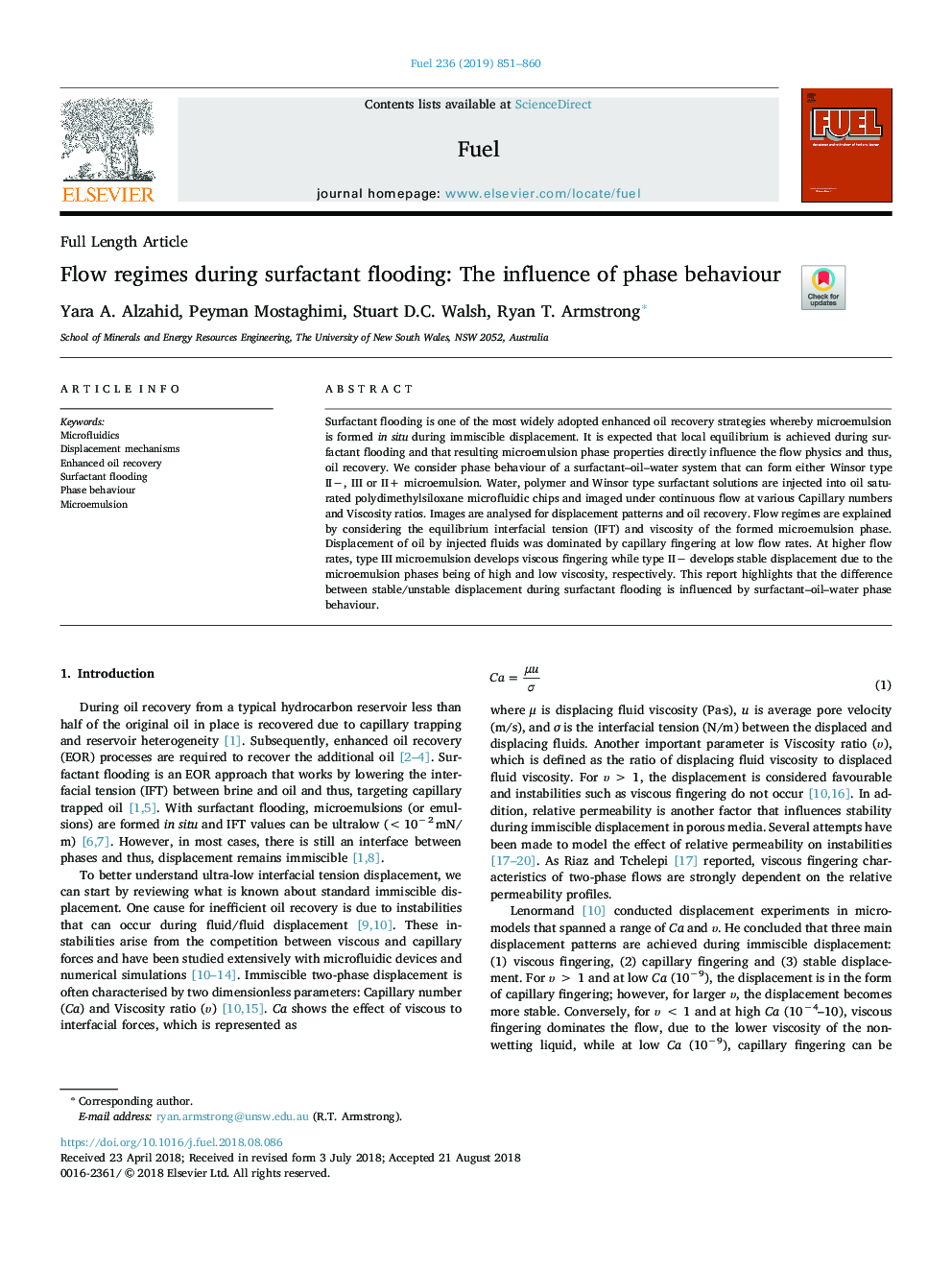| Article ID | Journal | Published Year | Pages | File Type |
|---|---|---|---|---|
| 11030238 | Fuel | 2019 | 10 Pages |
Abstract
Surfactant flooding is one of the most widely adopted enhanced oil recovery strategies whereby microemulsion is formed in situ during immiscible displacement. It is expected that local equilibrium is achieved during surfactant flooding and that resulting microemulsion phase properties directly influence the flow physics and thus, oil recovery. We consider phase behaviour of a surfactant-oil-water system that can form either Winsor type IIâ, III or II+ microemulsion. Water, polymer and Winsor type surfactant solutions are injected into oil saturated polydimethylsiloxane microfluidic chips and imaged under continuous flow at various Capillary numbers and Viscosity ratios. Images are analysed for displacement patterns and oil recovery. Flow regimes are explained by considering the equilibrium interfacial tension (IFT) and viscosity of the formed microemulsion phase. Displacement of oil by injected fluids was dominated by capillary fingering at low flow rates. At higher flow rates, type III microemulsion develops viscous fingering while type IIâ develops stable displacement due to the microemulsion phases being of high and low viscosity, respectively. This report highlights that the difference between stable/unstable displacement during surfactant flooding is influenced by surfactant-oil-water phase behaviour.
Keywords
Related Topics
Physical Sciences and Engineering
Chemical Engineering
Chemical Engineering (General)
Authors
Yara A. Alzahid, Peyman Mostaghimi, Stuart D.C. Walsh, Ryan T. Armstrong,
